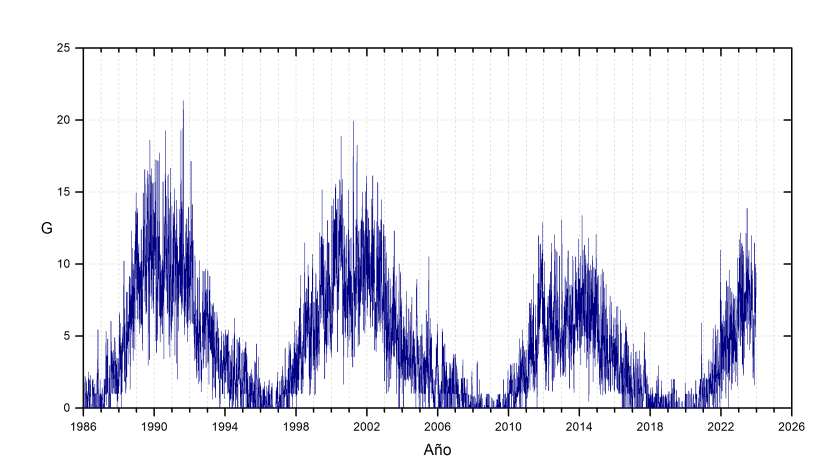

NUMBER OF GROUPS |
 |
 |
In the previous lists the daily and monthly averages of the number of groups have been tabulated. The treatment of the data has been similar to that of the Wolf numbers, and has been done independently. In the final series, the number of days without data is somewhat higher (1.7%).
In the first list, the columns correspond to the date, number of groups, standard deviation and number of observations included in the average. When n <3, s = 99.99 has been taken to avoid empty entries.
In the second list, the columns correspond to the month in the format "aaaamm", number of groups, and standard deviation.
Hoyt and Schatten introduced in 1999, the number of groups as activity index. The advantage is that it is easier to calculate, especially in old observations, and presents less dispersion, being less affected by observation conditions. The drawback is the same as with Wolf's number, that is, because he lacks a precise group definition, he is subject to the observer's criteria.
In the series built by Hoyt and Schatten, the relationship with Wolf's number is R / G = 12.08
In our case, the proportionality factor is higher (R / G = 17.71) because we observe more spots per group. If we use as a reference the Wolf numbers obtained by the SIDC (v.2), the factor is Ri / G = 19.02.